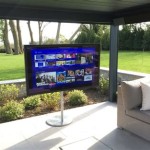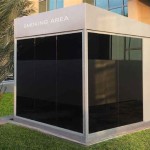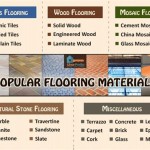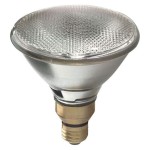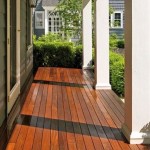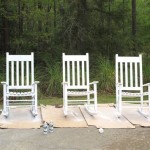Outdoor Recessed Can Lights: Illuminating and Enhancing Exterior Spaces
Outdoor recessed can lights, also known as downlights, offer a versatile and aesthetically pleasing solution for illuminating various exterior areas. These lighting fixtures are installed flush with the ceiling, soffit, or other overhead surfaces, creating a seamless integration with the architecture while providing focused, functional illumination. This article provides a comprehensive overview of outdoor recessed can lights, covering their types, benefits, installation considerations, and applications in enhancing outdoor spaces.
The primary function of outdoor recessed can lights is to provide targeted lighting for safety, security, and aesthetic enhancement. They are commonly used to illuminate walkways, patios, decks, entryways, and architectural features, creating a welcoming and visually appealing environment. The recessed design minimizes glare and light pollution, directing light downward for optimal utilization and reducing unwanted spillover into surrounding areas.
Types of Outdoor Recessed Can Lights
Outdoor recessed can lights are available in various types, each designed to meet specific lighting needs and aesthetic preferences. Understanding these different types is essential for selecting the right fixtures for a particular application.
Standard Recessed Cans: These are the most basic type of recessed can lights, consisting of a housing unit installed within the ceiling and a trim that is visible from below. They are often used for general lighting purposes and can accommodate various bulb types, including incandescent, halogen, and LED.
Shallow Recessed Cans: Designed for installations with limited space above the ceiling, shallow recessed cans feature a slimmer housing unit that requires less clearance. They are ideal for applications where obstructions or other structural elements restrict the available space.
Sloped Ceiling Recessed Cans: These fixtures are specifically designed for installation in sloped ceilings, ensuring that the light is directed downward rather than at an angle. They typically feature an adjustable gimbal ring that allows the bulb to be tilted to compensate for the slope of the ceiling.
Eyeball Recessed Cans: Eyeball recessed cans feature an adjustable bulb housing that can be rotated and tilted to direct the light beam to a specific area. This allows for precise control over the lighting and is particularly useful for accent lighting or highlighting architectural features.
Baffle Recessed Cans: Baffle recessed cans feature a series of concentric rings or baffles within the trim that help to reduce glare and soften the light output. They are often used in areas where glare control is important, such as patios or decks.
LED Recessed Cans: LED recessed cans are energy-efficient and long-lasting alternatives to traditional incandescent or halogen fixtures. They consume significantly less energy and have a much longer lifespan, reducing maintenance costs and environmental impact. LED recessed cans are available in various color temperatures and brightness levels, offering versatile lighting options.
The choice of recessed can type depends on the specific application, the available space, and the desired lighting effect. Consulting with a lighting professional can help to determine the most appropriate type of recessed can lights for a particular project.
Benefits of Using Outdoor Recessed Can Lights
Outdoor recessed can lights offer numerous benefits that make them a popular choice for exterior lighting applications. These benefits include enhanced aesthetics, improved safety and security, energy efficiency, and durability.
Aesthetic Appeal: Recessed can lights provide a clean and modern look that blends seamlessly with the surrounding architecture. The flush-mounted design minimizes visual clutter and creates a sophisticated appearance. They can be used to highlight architectural features, create ambient lighting, or provide task lighting for outdoor activities.
Enhanced Safety and Security: Properly placed recessed can lights can significantly improve safety and security by illuminating walkways, entryways, and other potentially hazardous areas. The focused light output provides clear visibility, reducing the risk of accidents and deterring potential intruders. Motion-activated recessed can lights can further enhance security by automatically turning on when movement is detected.
Energy Efficiency: LED recessed can lights are highly energy-efficient compared to traditional incandescent or halogen fixtures. They consume significantly less energy and have a much longer lifespan, reducing energy costs and maintenance requirements. The use of LED recessed can lights can contribute to a more sustainable and environmentally friendly lighting solution.
Durability and Weather Resistance: Outdoor recessed can lights are specifically designed to withstand the elements. They are typically constructed from durable materials such as aluminum or stainless steel and are sealed to protect against moisture, dust, and insects. This ensures that they can withstand the harsh conditions of outdoor environments and provide reliable performance for many years.
Versatility: Recessed can lights can be used in a variety of outdoor applications, including illuminating walkways, patios, decks, entryways, and architectural features. They can be installed in ceilings, soffits, or other overhead surfaces, providing flexible lighting options for different areas. The availability of different trim styles and finishes allows for customization to match the surrounding decor.
Reduced Light Pollution: By directing light downward, recessed can lights minimize light pollution and unwanted spillover into surrounding areas. This helps to preserve the natural darkness of the night sky and reduces the impact on wildlife and the environment. The use of shielded or glare-reducing trims can further minimize light pollution.
Installation Considerations for Outdoor Recessed Can Lights
Proper installation of outdoor recessed can lights is crucial for ensuring optimal performance, safety, and longevity. Several factors must be considered during the installation process, including location, wiring, and weatherproofing.
Location: The location of recessed can lights should be carefully planned to provide adequate lighting for the intended purpose. Consider the size and shape of the area to be illuminated, the amount of light required, and the architectural features that need to be highlighted. Proper spacing between fixtures is essential to ensure even light distribution and avoid dark spots.
Wiring: Outdoor electrical wiring must comply with local codes and regulations. All wiring connections should be properly sealed and protected from moisture. Ground Fault Circuit Interrupters (GFCIs) should be installed to protect against electrical shock. It is recommended to hire a qualified electrician to handle the wiring installation.
Weatherproofing: Outdoor recessed can lights must be weatherproofed to protect against moisture, dust, and insects. The housings should be sealed to prevent water from entering, and the trims should be made from corrosion-resistant materials. Ensure that the fixtures are rated for outdoor use and are suitable for the specific climate conditions.
Insulation: If the recessed can lights are installed in an insulated ceiling, ensure that they are Insulation Contact (IC) rated. IC-rated fixtures are designed to be in direct contact with insulation without posing a fire hazard. Non-IC-rated fixtures require a minimum clearance from insulation to prevent overheating.
Dimming: Consider using dimmable LED recessed can lights to provide adjustable lighting levels. This allows for customization of the lighting to suit different activities and moods. Ensure that the dimmer switch is compatible with the LED fixtures.
Professional Installation: It is generally recommended to hire a qualified electrician or lighting professional to install outdoor recessed can lights. This ensures that the installation is done safely and correctly, complying with all applicable codes and regulations. Professional installation can also help to optimize the placement and performance of the fixtures.
By carefully considering these installation factors, one can ensure that outdoor recessed can lights provide safe, reliable, and aesthetically pleasing illumination for exterior spaces.

Recessed Led Down Lighting Outdoor Indoor Lights

Guide To Choosing The Right Recessed Light Fixtures For Your Home Exterior

8 Outdoor Recessed Lighting Ideas For Your Porch Flip The Switch

In Outdoor Recessed Lighting Rustic Exterior Design

Guide To Choosing The Right Recessed Light Fixtures For Your Home Exterior

Outdoor Recessed Lighting Guide Tutor

Soffit Lighting Installing Outdoor Recessed Lights

Exterior Recessed Soffit Lighting Aspectled

8 Outdoor Recessed Lighting Ideas For Your Porch Flip The Switch

How To Install Recessed Led Soffit Lights Ultra Thin 4 Inch Retrofit

